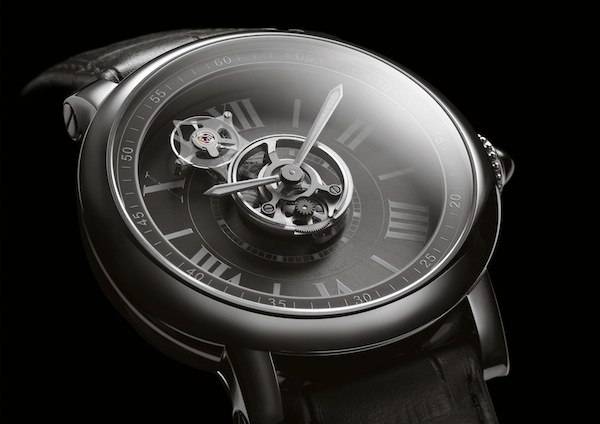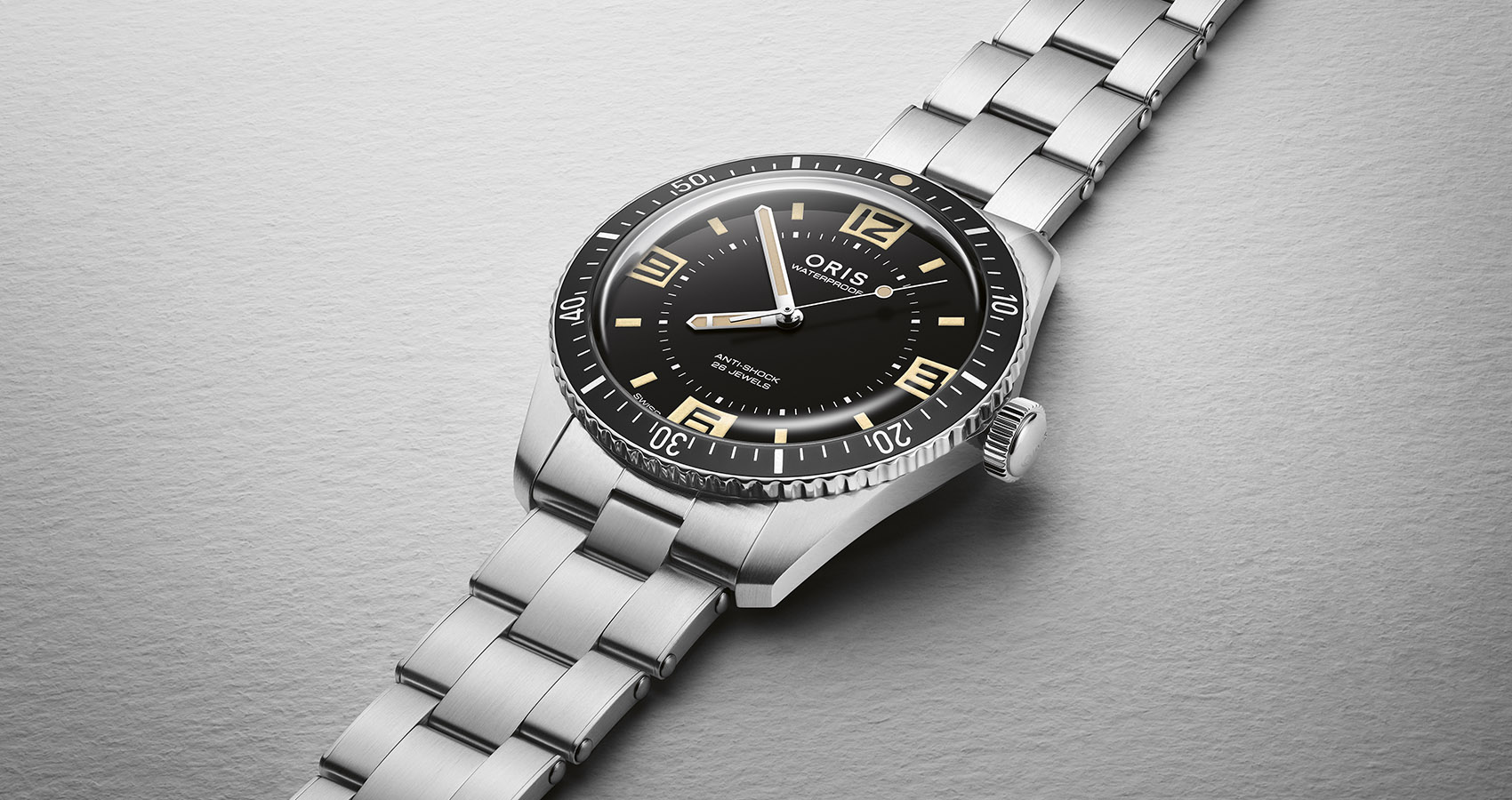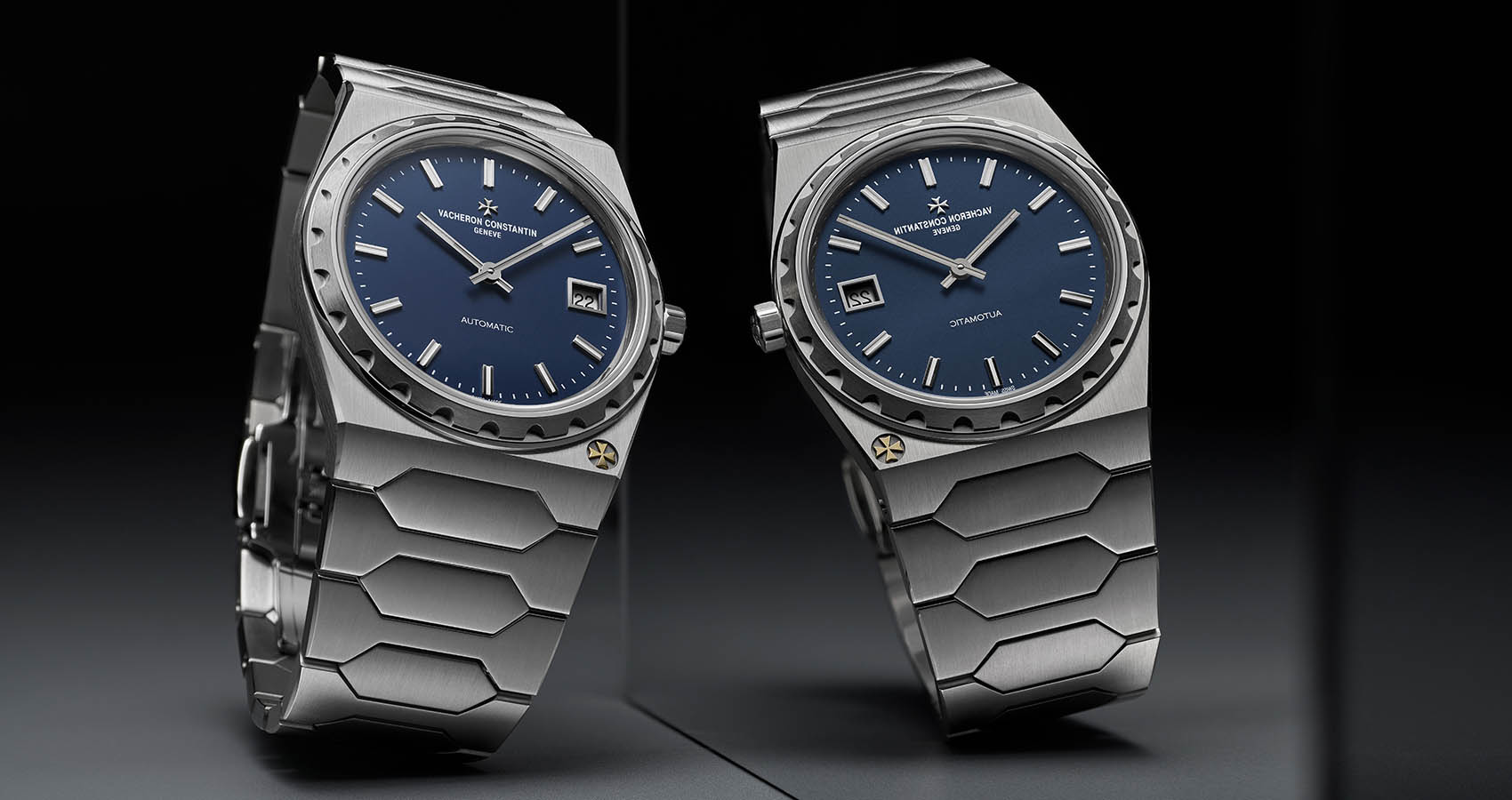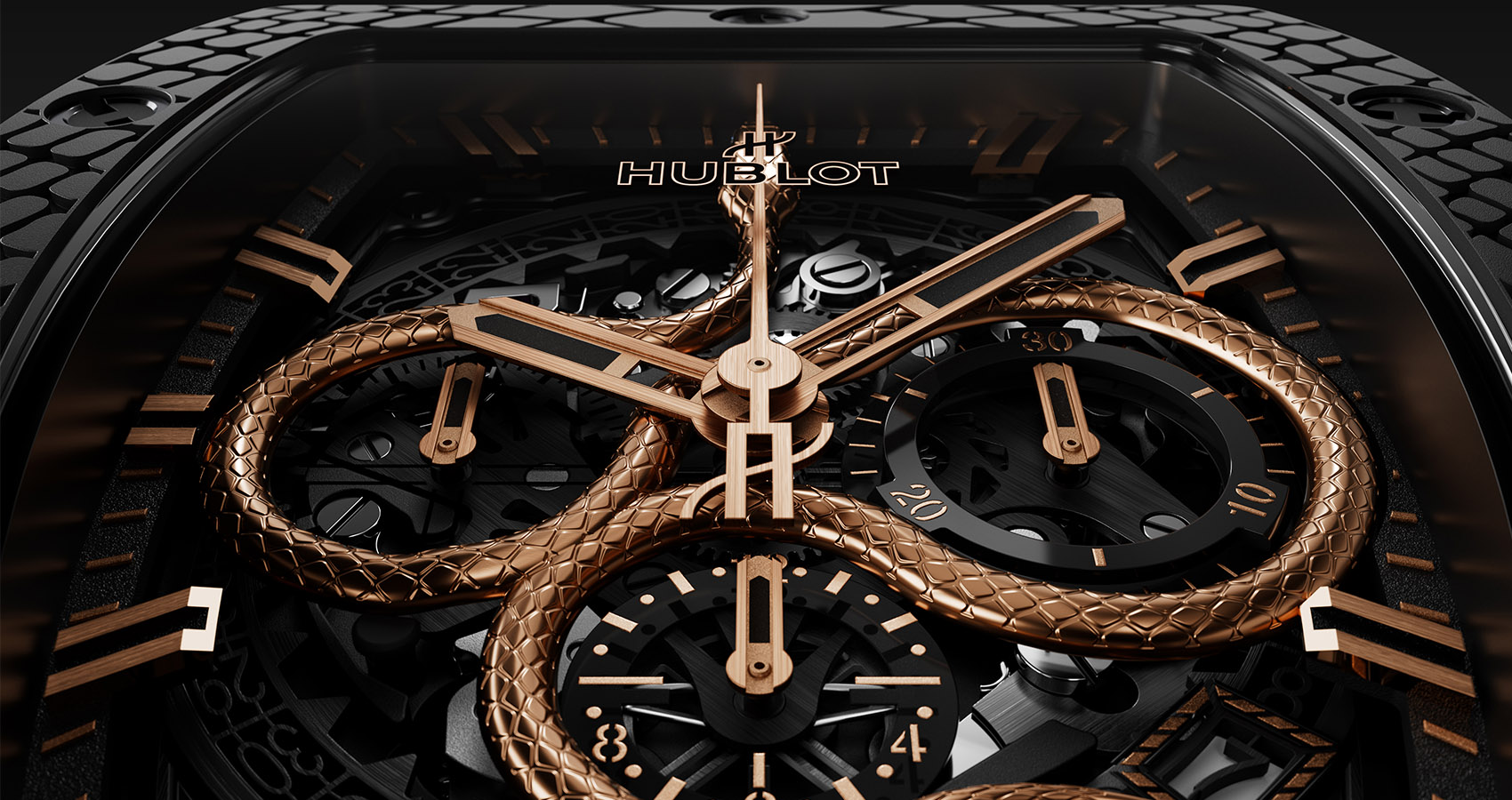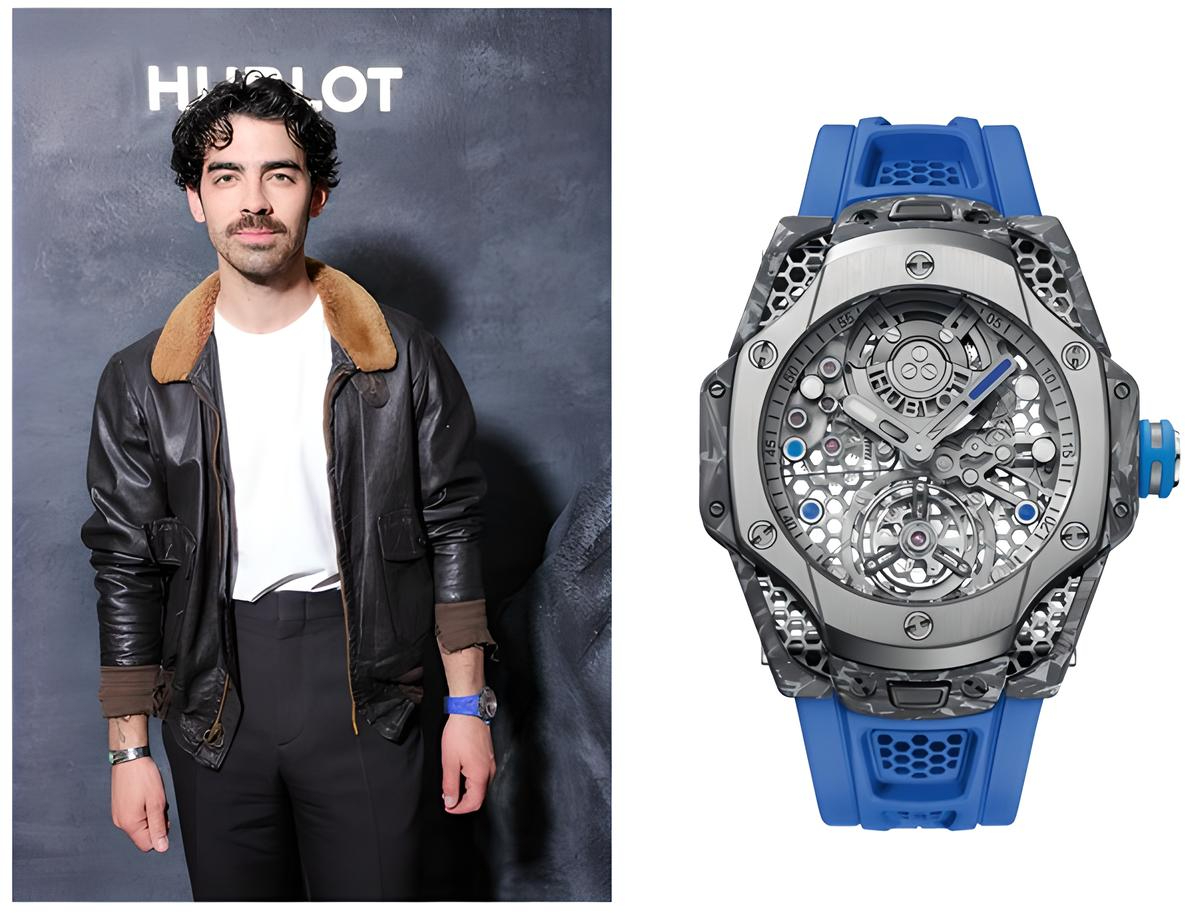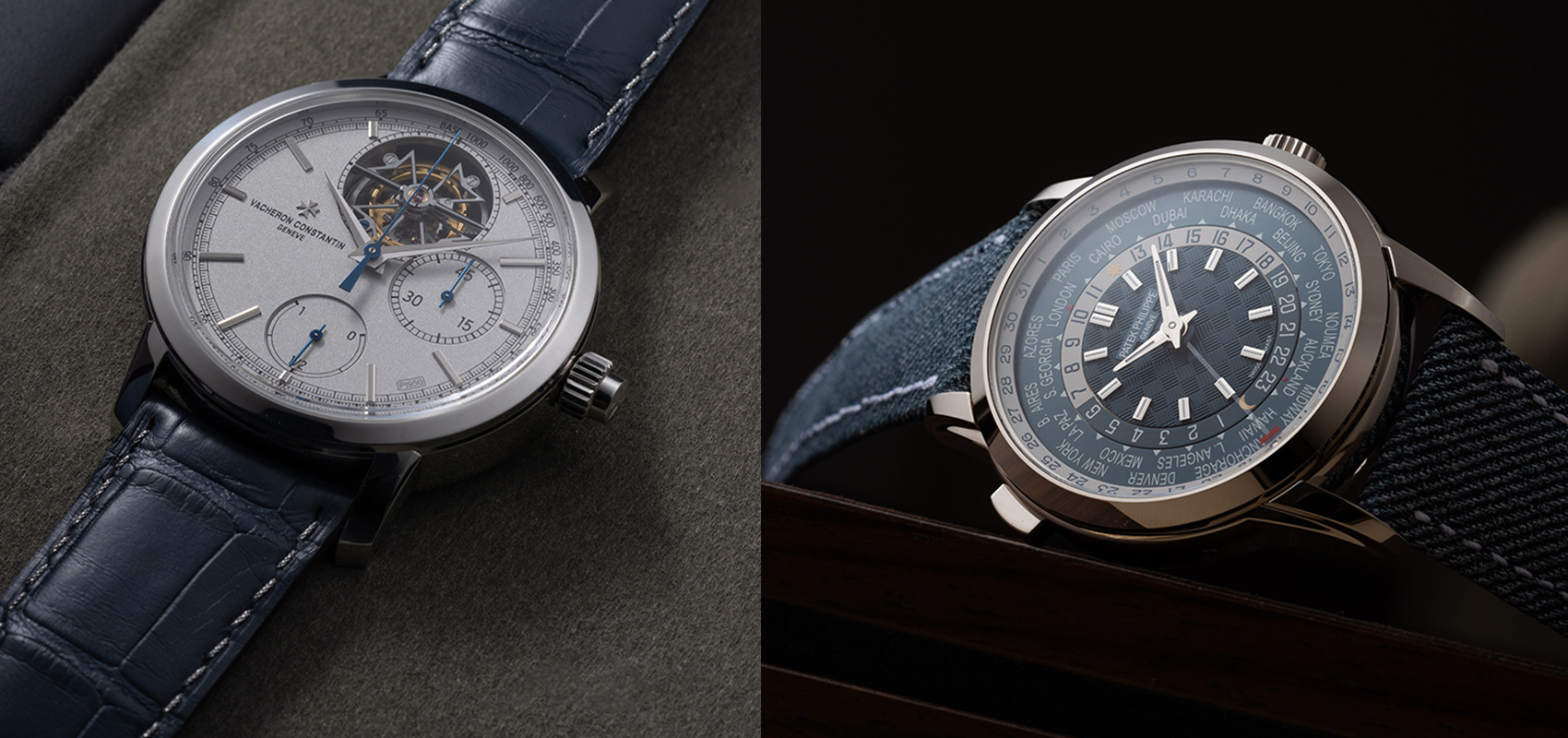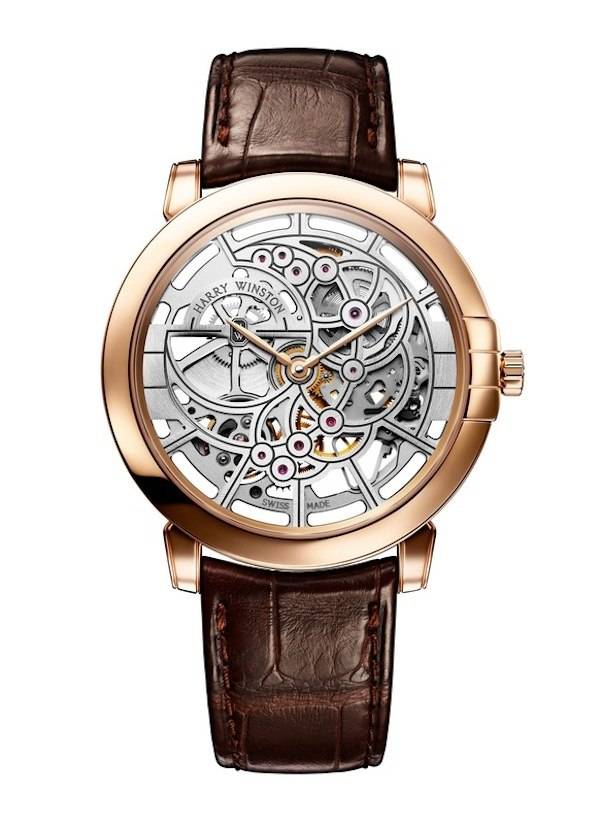
FIRST LOOK: THE HARRY WINSTON MIDNIGHT COLLECTION MIDNIGHT SKELETON WATCH
The whole notion of a skeleton watch in a collection called “Midnight” is a delightful, Halloween-ish conceit, and the watch is just as delightful –well, one is tempted to say, “in the flesh,” but of course, what a skeletonized watch is, is exactly the opposite. Skeletonizing, or openworking, is the art of taking a watch movement –the mechanism that enables the watch to keep time –and removing as much metal as you dare, without fatally compromising the strength of the movement or its ability to function.
The tricky part of all this is that a watch movement often already consists of about as little material as the watchmaker who designed it thought he could get away with. Watch movements can theoretically be made very small (though the smallest ever made dates all the way back to 1929 and weighs exactly one gram) but as with any machine, the less material you have to work with the more precisely you need to construct it. Moreover, making an aesthetically satisfying openworked movement presents a special kind of challenge because not only were most watch movements never meant to see the light of day (despite the vogue for display backs in the last decade and a half, they were for most of the history of watchmaking very much the exception, not the rule) they were designed not for aesthetic interest, but for mechanical reliability.
All of which makes the new Midnight Collection Midnight Skeleton Watch from Harry Winston especially delightful. Harry Winston’s taken the openworked watch and turned it into a piece of modern art, with echoes of Cubist and Constructivist art from the early 20th century (both noted for their “analysis” of organic forms into geometric shapes) as well as echoes of the classic, post-World-War 2 Modernist architecture that transformed skylines not only across Europe, but especially in New York –Harry Winston’s hometown.
The creation of the watch begins with a movement from Manufacture Vaucher, Harry Winston’s technical partner. The movement is a microrotor design with a 42 hour power reserve running at 21,600 vph –the microrotor allows for a more unobstructed view of the movement. The basic motif is an arrangement of overlapping circles, cutting into each other’s circumferences like nested bubbles. A close look reveals the signature Winsto triple arch on the bezel at the winding crown, but that motif is also repeated on the movement plate.
The slight asymmetry between the two triple-arch elements on the plate lends extra dynamism to the dial and you realize, as you examing the design, that the overall form of the openworking is that of a snail’s-shell logarithmic spiral, moving counterclockwise from the micro-rotor and terminating at 11:00. It’s a subtle, beautifully well-thought-out design. Legibility, often a problem with openworked watches, is made easier with the Midnight Skeleton as the entire movement is suspended in the case by struts at each of the horary positions.
It’s a subtly Modernist and very tastefully done update of a very traditional form of horological decoration, from the House of Harry Winston.
The Harry Winston Midnight Skeleton will be available later this fall, in 18k white or rose gold. Case, 42mm wide and a svelte 7.5mm thin. Black or brown alligator strap; $44,200.
Photo courtesy Harry Winston.
CRYSTAL MAGIC: THE CARTIER ASTROTOURBILLON CARBON CRYSTAL
Cartier’s Fine Watchmaking Collection has in a few short years transformed the watch enthusiast world’s perception of the firm from that of a jeweler that dabbles in watches to that of a world leader in watchmaking innovation and design. In fairness to Cartier, the former view –that, a few iconic models notwithstanding (the Tank, for instance, or the Santos) the company’s real identity lay in the feminine world of decorative but mechanically inert jewelry –was not exactly accurate either; Cartier’s long history of watchmaking includes iconic designs (the Tank and Santos both began life in the early 20th century and not only debuted at the dawn of the wristwatch era, but in many respects defined it) as well as extremely exotic complications, culminating in the mystery clocks, in which the hands of the clock, suspended between two panes of transparent rock crystal, seem to move with no mechanical connection to any driving mechanism.
Today’s Fine Watchmaking Collection is very much in the mystery clock tradition; the use of mechanics in the service of unusual and even whimsical mechanical effects, and an ongoing fascination with visual sleight-of-hand and transparency, still mark many of the Fine Watchmaking Collection’s designs. One of the most intriguing of these is the Astrotourbillon, which is an extremely unusual variation on the usual tourbillon design. In the Astrotourbillon, the (very large) tourbillon is on the dial side of the watch, carries the escapement and balance on its tip, and pivots on a central axis, allowing it to act as the seconds hand –in technical terms, it is a one minute central carrousel tourbillon.
The Astrotourbillon Carbon Crystal goes the original design one better by incorporating –for the first time –technology first introduced by Cartier in its ID One Concept Watch, which was shown three years ago as a proof-of-concept platform for Cartier’s synthetic diamond (called “Carbon Crystal”) movement components, as well as a whole host of other innovations. Though sleekly beautiful and positioned at the bleeding edge of watchmaking innovation, ID One was not, and is not, for sale (Cartier has refused seven figure offers for the prototype from determined but doomed-to-disappointment collectors) However, Cartier did say then that the innovations of ID One would be used in future watch designs –and the Astrotourbillon Carbon Crystal is the first of the new breed.
The Astrotourbillon Carbon Crystal uses Cartier’s Carbon Crystal, or polycrystalline synthetic diamond, for the construction of the tourbillon carriage, escape wheel, and escapement lever. As a new design element this plays right to the Astrotourbillon’s strengths as an exercise in transparency and the illusion of autonomous movement (very much in the mystery clock tradition.) Functionally it’s a home run as well; Carbon Crystal is very light and even with the hidden platinum counterweight, the entire carriage weighs a mere 0.46 grams. The new material also means the escapement needs no oil –a major aid to accuracy, as time-related changes in watch oils are a major contributor to decreasing accuracy.
Finally, the Astrotourbillon Carbon Crystal uses the niobium-titanium case alloy that debuted in the ID One Concept Watch. It’s got a cool, blue-grey luster unlike any watch case material we’ve seen, and functionally, it’s superior as well –the alloy has shock absorption characteristics that help protect the movement better than any more traditional case material.
Time marches on, and so does Cartier –now the maker of not just some of the world’s most beautiful watches, but some of the most technically advanced as well.
The Astrotourbillon Carbon Crystal will be released in a limited edition of only 50 pieces worldwide. Price available on request from Cartier. Case: Niobium-titanium, 47mm, Rotonde de Cartier, with central carrousel tourbillon Cartier calibre 9460 MC, fitted with a one minute tourbillon carriage and escapement in Carbon Crystal. Alligator strap with 18k white gold clasp.
Photo courtesy ABlogToRead.com.
 SIGN UP
SIGN UP

